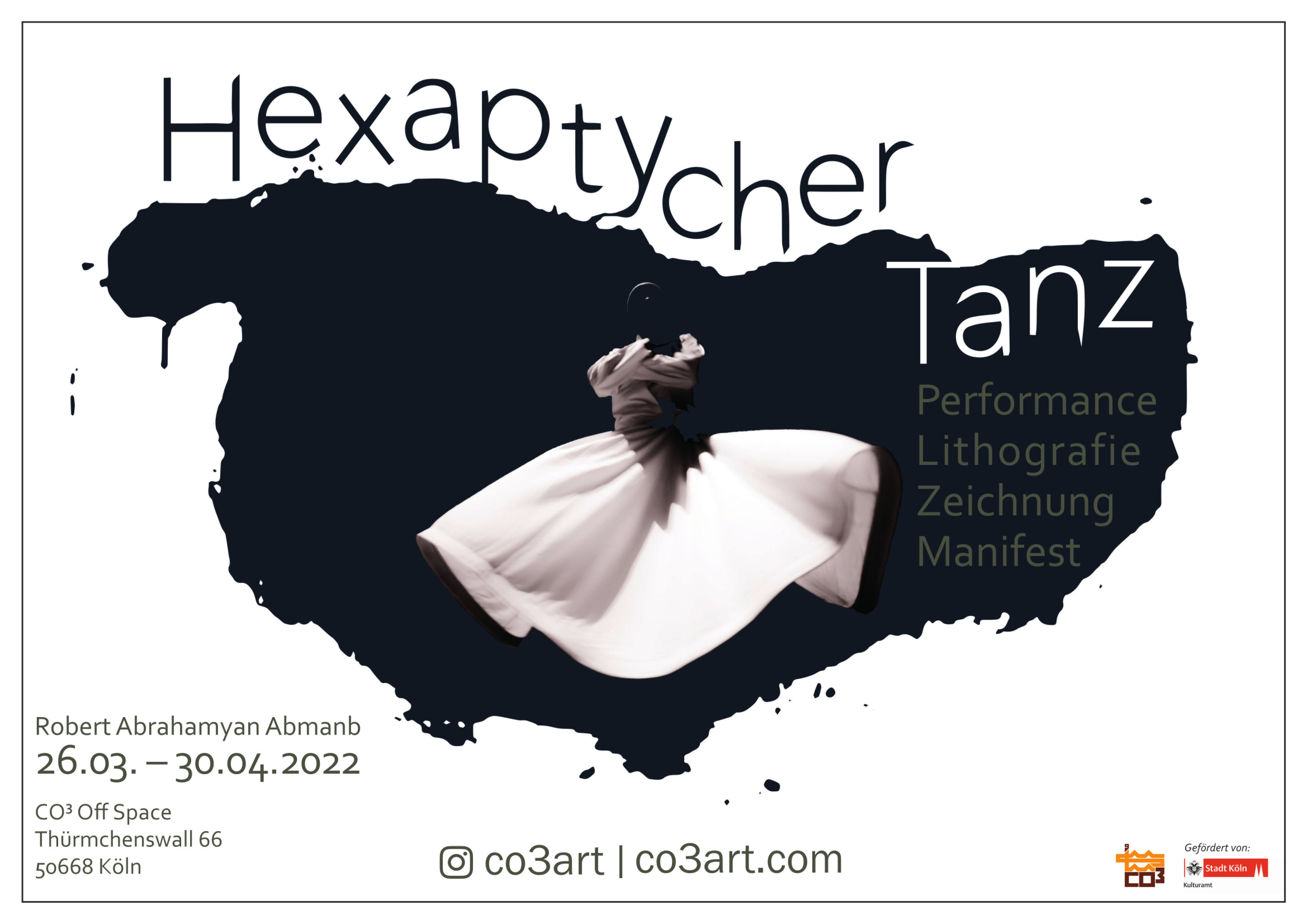FOLLOW US ON SOCIAL MEDIA:
LOCATION: Thürmchenswall 66 | D-50668 Köln
EMAIL: leila.cheraghi @co3art.com
TEL: +49 170 28 91 985

The exhibition Hexaptych Dance explores recent works by Armenian artist Robert Abrahamyan Abmanb. Contemporary interpretations of Dervish dances expand the
performative approach of the exhibition, which consists of lithographs, drawings, and a manifesto. In his work, Abmanb synthesises elements of various religions, which are explored with regard to their ritualistic nature. The artist, who lives in the embattled region of Nagorno-Karabakh and in Yerevan, combines the cyclical form of Christian altarpieces, such as the six-part hexaptych, with Sufism.
CO³ offspace is showing works by Abmanb for the first time in Germany that combine references to classical modernism, such as Malevich’s “black square”, Russian Orthodox icon painting and futuristic poetry. The manifesto The Difference. Gospel of Contemporary Art circulates between these fixed points and examines the various modes of creative work, particularly in the “performative” arts.
The archaic natural forces of the Caucasus meet traces of artistic modernism in the work of the Armenian artist. The Armenian Futurism of the early 20th century, in particular the poetry of the Sufism-inspired poet Kara-Darvish (1872-1930), is repeatedly present in various works by Abmanb. The pamphlet by Kara-Darvish (pseudonym of Hagop Genjian: Inch’e futurizmy? [What is Futurism?]) was published in 1914, one year before the genocide of the Armenian population in Turkey, which was also an enormous turning point for artistic exchange in the entire region.
If the sometimes shocking effect on people’s perception was central to Futurism, Abmanb’s works are characterised by the roughness of their material and the various drawing, painting and print-based techniques, which are also intended to stimulate and activate people’s awareness. For example, Abmanb had a postcard printed with a view of a wild, rugged landscape and the dark rocks of his home region. The postcard is a reference to Kara-Darvish, who recited and distributed postcard poems in Armenian on the streets of Tbilisi, which in turn were oriented towards Russian ‘transmental’ poetics. The artistic currents of this period are thus situated in a cross-cultural, pan-European context.
The six lithographs with monochrome black areas resemble maps or psychogeographies in their outlines. The artist works here with the dynamics of thesis, antithesis and synthesis, which are recognisable in the orientation of the surfaces. Abmanb sees these lithographs as “outside the series”, i.e. outside the cycles he has produced in previous years. The lithographs also perform a dance of their own. At the same time, these surfaces can also be read as areas that are constantly in conflict. Just as the poet Kara-Darvish used his postcards around 1920 to send his poems to all corners of the world and thus create new connections, the works of Robert Abrahamyan Abmanb can now reach Cologne and build new bridges.
With a new interpretation of dervish dances, the links between the arts on the one hand and between religions on the other will be established at the opening and closing events of the Hexaptych Dance exhibition.
Supported by: Cultural Office of the City of Cologne

GALLERY
FOLLOW US ON SOCIAL MEDIA:
LOCATION: Thürmchenswall 66 | D-50668 Köln
EMAIL: leila.cheraghi @co3art.com
TEL: +49 170 28 91 985
© 2024 CO³ — ALL RIGHTS RESERVED | WEBSITE DESIGN: STUDIO KOLY